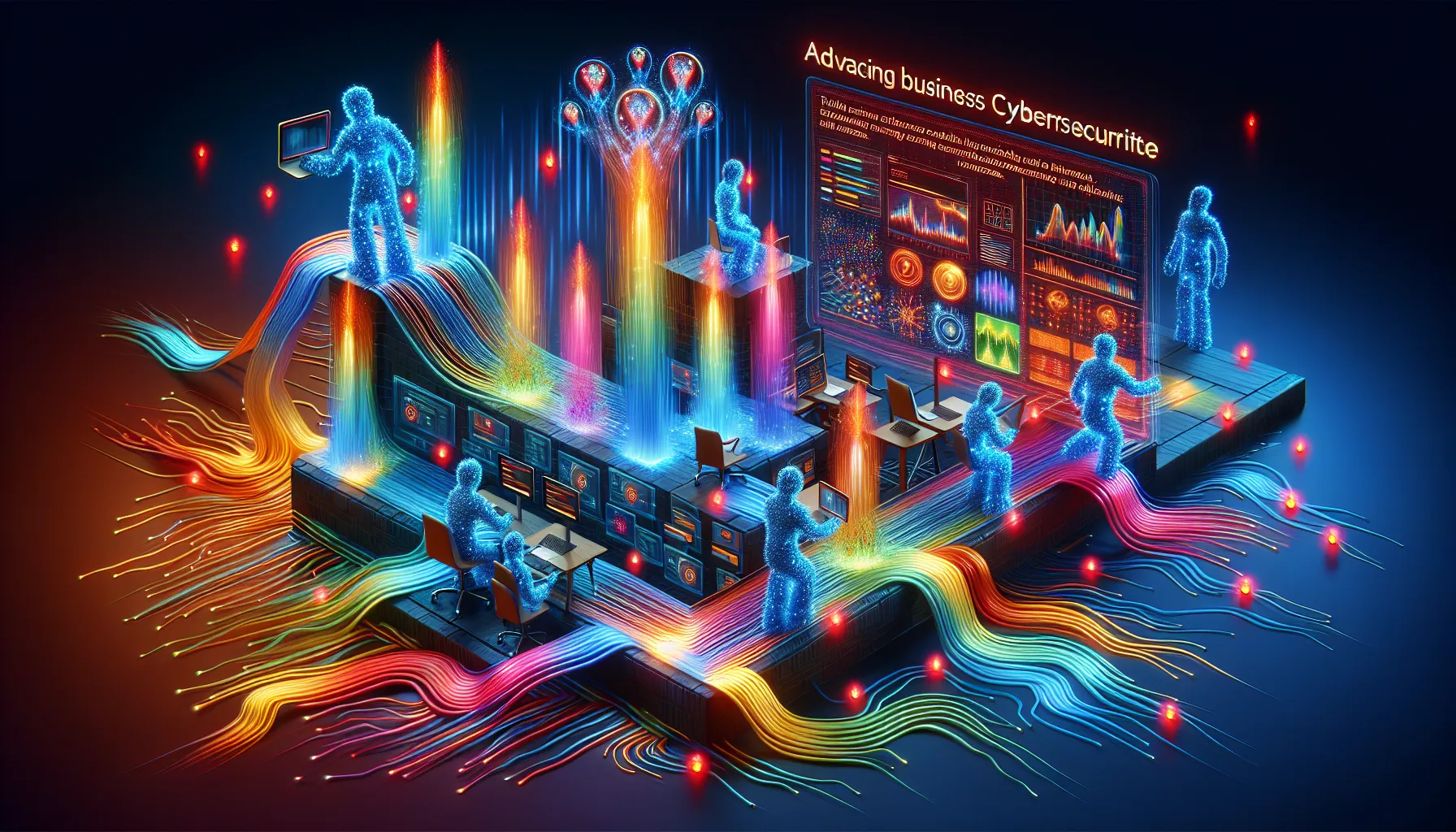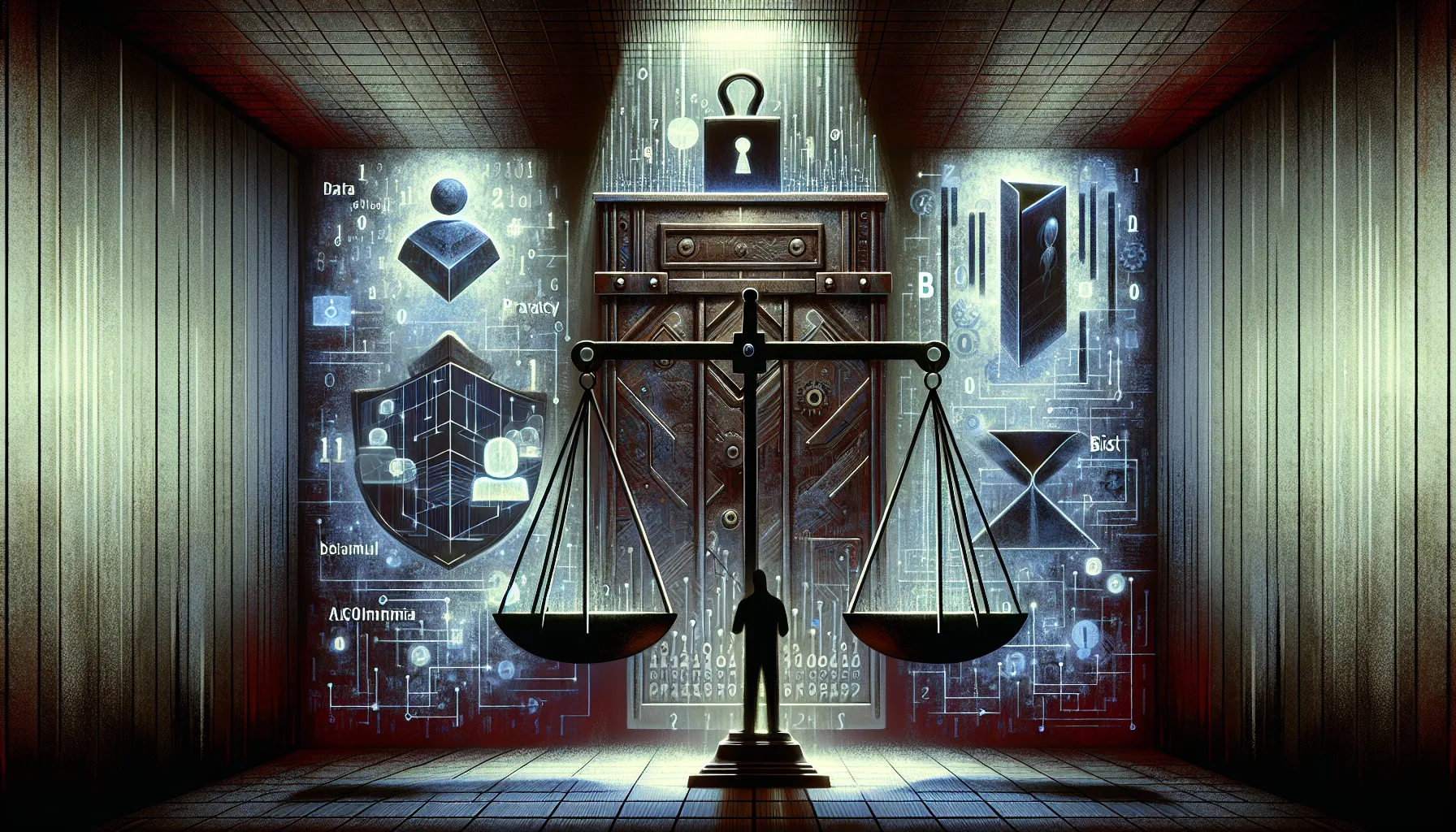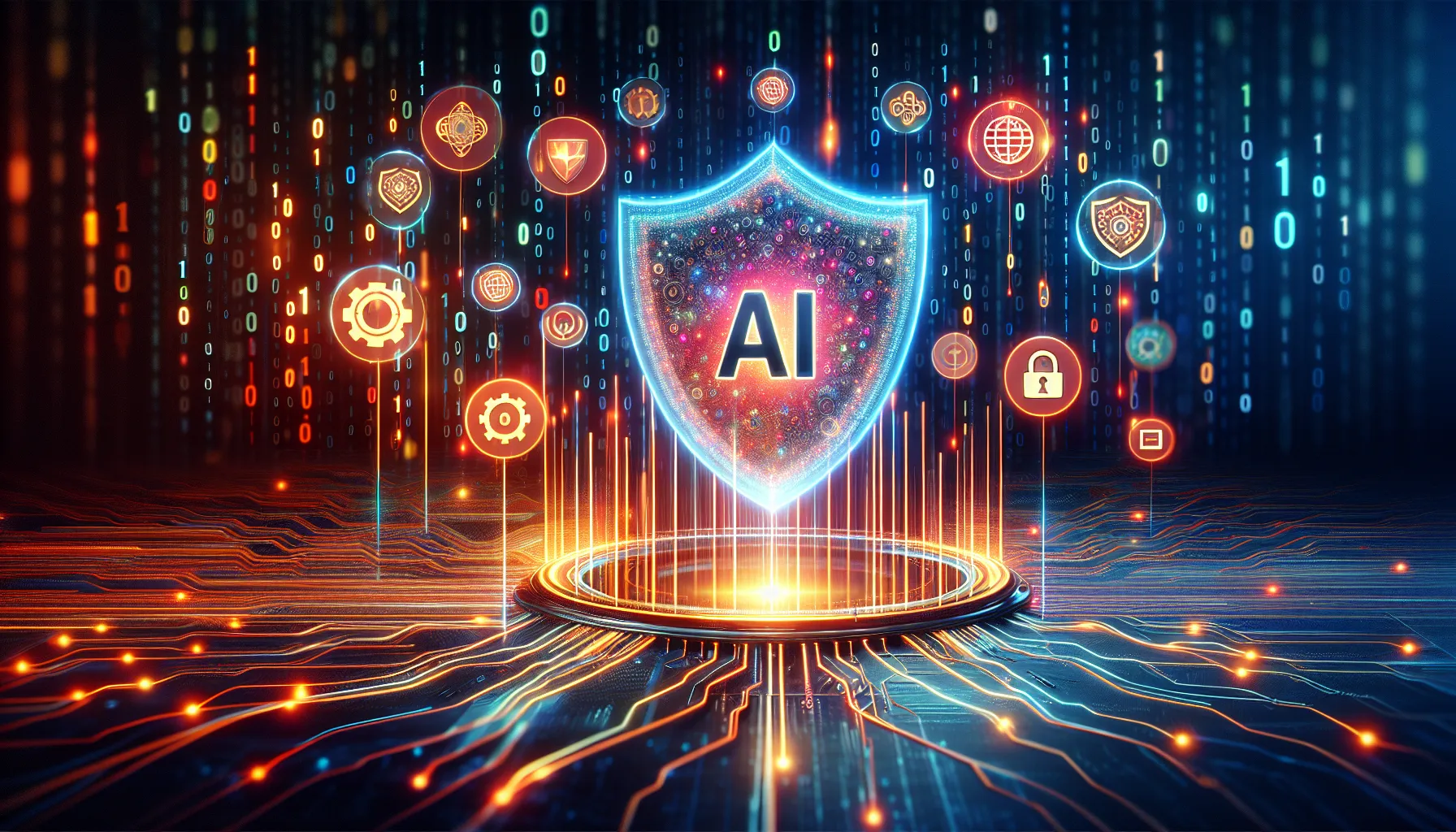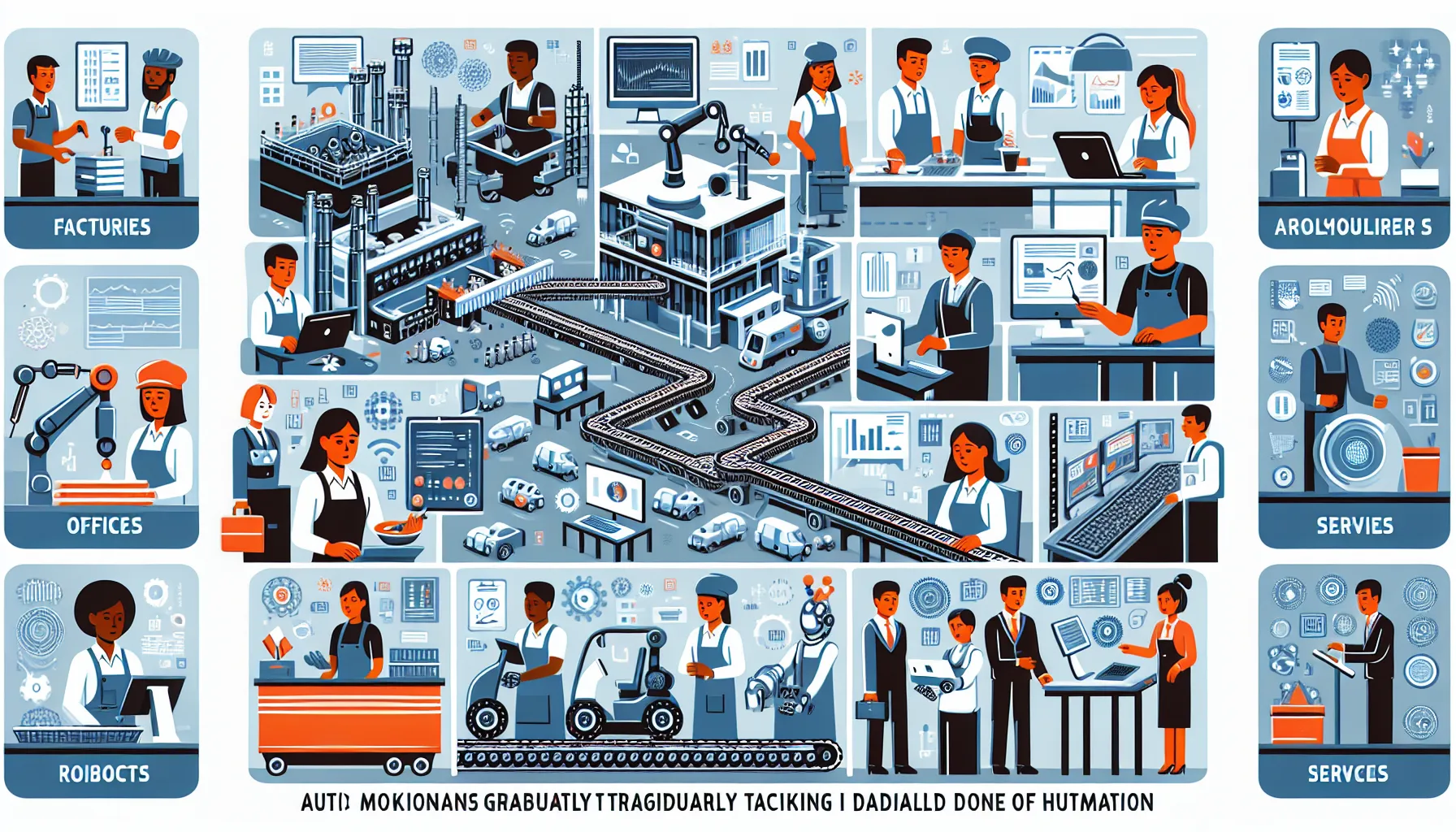In today’s digital age, cybersecurity has become a critical concern for businesses of all sizes. As cyber threats evolve and become more sophisticated, companies are turning to artificial intelligence (AI) to enhance their security measures. This IELTS Reading practice test focuses on the topic of “AI in improving cybersecurity for businesses,” providing you with an opportunity to develop your reading skills while exploring this important subject.
Nội dung bài viết
Reading Passage 1
The Rise of AI in Cybersecurity
In recent years, the landscape of cybersecurity has undergone a significant transformation. As businesses increasingly rely on digital technologies, they face a growing array of cyber threats that can potentially compromise their operations, data, and reputation. Traditional security measures, while still important, are often insufficient to combat the sophisticated attacks launched by cybercriminals. This has led to a surge in interest in artificial intelligence (AI) as a powerful tool for enhancing cybersecurity.
AI technologies, particularly machine learning algorithms, have demonstrated remarkable capabilities in detecting and mitigating cyber threats. Unlike conventional security systems that rely on predefined rules and signatures, AI-powered solutions can analyze vast amounts of data in real-time, identifying patterns and anomalies that may indicate a potential security breach. This proactive approach allows businesses to stay one step ahead of cybercriminals, who are constantly developing new techniques to circumvent security measures.
One of the key advantages of AI in cybersecurity is its ability to adapt and learn from new threats. Machine learning models can be trained on historical data and continuously updated with new information, enabling them to recognize emerging attack vectors and evolving malware strains. This adaptive nature is crucial in an environment where cyber threats are constantly evolving and becoming more sophisticated.
Moreover, AI can significantly enhance the efficiency of security operations. By automating routine tasks such as log analysis and threat detection, AI frees up human analysts to focus on more complex security challenges that require critical thinking and decision-making skills. This not only improves the overall effectiveness of cybersecurity efforts but also helps address the growing shortage of skilled cybersecurity professionals.
While the integration of AI in cybersecurity offers numerous benefits, it is not without challenges. The complexity of AI systems can make it difficult for organizations to fully understand and trust their decision-making processes. Additionally, AI algorithms themselves can be vulnerable to manipulation by adversaries, potentially creating new avenues for attacks. As such, businesses must approach the adoption of AI in cybersecurity with caution, ensuring proper governance and oversight mechanisms are in place.
Despite these challenges, the potential of AI to revolutionize cybersecurity is undeniable. As businesses continue to face increasingly sophisticated cyber threats, the integration of AI technologies will likely become a necessity rather than a luxury. By leveraging the power of AI, organizations can build more robust, responsive, and resilient cybersecurity defenses, better protecting their assets and maintaining the trust of their stakeholders in an increasingly digital world.
 AI in Cybersecurity
AI in Cybersecurity
Questions 1-7
Do the following statements agree with the information given in Reading Passage 1? Write
TRUE if the statement agrees with the information
FALSE if the statement contradicts the information
NOT GIVEN if there is no information on this
- Traditional security measures are no longer useful in combating cyber threats.
- AI-powered cybersecurity solutions can analyze data in real-time.
- Machine learning models in cybersecurity are static and cannot be updated.
- AI can help address the shortage of skilled cybersecurity professionals.
- The decision-making processes of AI systems are always transparent and easy to understand.
- AI algorithms are completely immune to manipulation by cybercriminals.
- The adoption of AI in cybersecurity is expected to become increasingly necessary for businesses.
Questions 8-13
Complete the sentences below.
Choose NO MORE THAN TWO WORDS from the passage for each answer.
- Traditional security measures often rely on predefined rules and ____.
- AI-powered solutions can identify ____ and anomalies that may indicate a security breach.
- The ____ nature of AI is crucial in an environment where cyber threats are constantly evolving.
- By automating routine tasks, AI allows human analysts to focus on more ____ security challenges.
- The integration of AI in cybersecurity requires proper ____ and oversight mechanisms.
- AI technologies can help businesses build more ____ and resilient cybersecurity defenses.
Reading Passage 2
AI-Driven Threat Detection and Response
The implementation of artificial intelligence (AI) in cybersecurity has revolutionized the way businesses detect and respond to threats. Traditional security measures often rely on signature-based detection, which can be effective against known threats but falls short when faced with novel or polymorphic malware. AI-driven systems, on the other hand, leverage advanced algorithms and machine learning to identify potential threats based on behavioral patterns and anomalies.
One of the key advantages of AI in threat detection is its ability to process and analyze vast amounts of data at unprecedented speeds. Modern enterprises generate enormous volumes of log data, network traffic, and user activity information. AI systems can sift through this data in real-time, identifying subtle patterns and correlations that might escape human analysts. This capability is particularly valuable in detecting Advanced Persistent Threats (APTs), which are sophisticated, long-term attacks that often go unnoticed for extended periods.
Machine learning models used in AI-driven threat detection systems can be trained on historical data to recognize normal behavior patterns within an organization’s network. Any deviation from these established norms can trigger an alert, allowing security teams to investigate potential threats promptly. Moreover, these models can continuously learn and adapt based on new data, improving their accuracy over time and staying ahead of evolving threat landscapes.
AI also plays a crucial role in automating incident response processes. When a potential threat is detected, AI systems can initiate predefined response protocols, such as isolating affected systems, blocking suspicious IP addresses, or revoking user credentials. This rapid, automated response can significantly reduce the dwell time of threats within a network, minimizing potential damage.
Furthermore, AI-powered security orchestration, automation, and response (SOAR) platforms can streamline and enhance the overall incident response process. These platforms can automatically gather relevant information about a security incident, correlate data from multiple sources, and provide security analysts with a comprehensive view of the situation. This not only speeds up the investigation process but also helps in making more informed decisions about how to mitigate the threat.
Natural Language Processing (NLP), a subset of AI, is another valuable tool in cybersecurity. NLP algorithms can analyze vast amounts of unstructured data from various sources, including security blogs, threat intelligence feeds, and social media platforms. This analysis can help identify emerging threats, new attack techniques, or vulnerabilities that might affect an organization’s systems.
While AI offers significant advantages in threat detection and response, it is important to note that it is not a panacea for all cybersecurity challenges. Human expertise remains crucial in interpreting AI-generated insights, fine-tuning algorithms, and making critical decisions in complex security scenarios. Additionally, AI systems themselves can be targets of attacks, such as adversarial machine learning techniques designed to manipulate or deceive AI models.
As AI continues to evolve, its role in cybersecurity is likely to expand further. Emerging technologies like explainable AI (XAI) are being developed to address some of the current limitations, such as the “black box” nature of complex AI models. XAI aims to make AI decision-making processes more transparent and interpretable, which is crucial for building trust in AI-driven security solutions and meeting regulatory requirements.
In conclusion, AI-driven threat detection and response represent a significant leap forward in cybersecurity capabilities. By leveraging the power of machine learning, natural language processing, and automation, businesses can enhance their ability to detect, respond to, and mitigate cyber threats in an increasingly complex digital landscape. However, the effective implementation of AI in cybersecurity requires a balanced approach that combines advanced technology with human expertise and robust governance frameworks.
Questions 14-19
Choose the correct letter, A, B, C, or D.
-
According to the passage, traditional security measures are less effective against:
A) Known threats
B) Signature-based attacks
C) Novel or polymorphic malware
D) Advanced Persistent Threats -
AI-driven systems in cybersecurity can:
A) Only detect known threats
B) Process data slower than human analysts
C) Identify subtle patterns and correlations in data
D) Replace human analysts entirely -
Machine learning models in AI-driven threat detection:
A) Cannot be updated once trained
B) Can adapt based on new data
C) Only work with small datasets
D) Are less accurate than traditional methods -
AI-powered security orchestration, automation, and response (SOAR) platforms:
A) Slow down the incident response process
B) Provide limited information to analysts
C) Can only handle simple security incidents
D) Help in making more informed decisions about threat mitigation -
Natural Language Processing (NLP) in cybersecurity:
A) Is only useful for structured data analysis
B) Can help identify emerging threats from various sources
C) Is not related to artificial intelligence
D) Can only analyze security blogs -
The passage suggests that explainable AI (XAI) is being developed to:
A) Replace human expertise in cybersecurity
B) Make AI models more complex
C) Make AI decision-making processes more transparent
D) Eliminate the need for regulatory compliance
Questions 20-26
Complete the summary below.
Choose NO MORE THAN TWO WORDS from the passage for each answer.
AI has revolutionized cybersecurity by enhancing threat detection and response capabilities. Unlike traditional (20)____ detection methods, AI can identify threats based on behavioral patterns and anomalies. AI systems can process vast amounts of data in real-time, which is particularly useful for detecting (21)____ that may go unnoticed for long periods. Machine learning models can be trained to recognize (22)____ within a network and alert security teams to any deviations.
In incident response, AI can automate processes such as isolating affected systems or blocking suspicious (23)____. AI-powered SOAR platforms streamline the incident response process by gathering and correlating data from multiple sources. (24)____, a subset of AI, can analyze unstructured data to identify emerging threats and new attack techniques.
However, AI is not a complete solution for all cybersecurity challenges. Human expertise remains crucial for interpreting AI-generated insights and making decisions in complex scenarios. AI systems themselves can be targets of attacks, such as (25)____ techniques designed to manipulate AI models.
As AI evolves, technologies like (26)____ are being developed to make AI decision-making processes more transparent and interpretable, which is important for building trust in AI-driven security solutions.
Reading Passage 3
The Ethical Implications of AI in Cybersecurity
The integration of artificial intelligence (AI) into cybersecurity practices has undoubtedly bolstered the defensive capabilities of businesses against an ever-evolving threat landscape. However, this technological advancement brings with it a host of ethical considerations that must be carefully examined and addressed. As AI systems become more sophisticated and autonomous in their decision-making processes, questions arise about accountability, privacy, and the potential for unintended consequences.
One of the primary ethical concerns surrounding AI in cybersecurity is the issue of bias in AI algorithms. Machine learning models are trained on historical data, which may inadvertently incorporate existing biases present in that data. For instance, if an AI system is trained on datasets that reflect historical discrimination or unequal representation, it may perpetuate or even exacerbate these biases in its decision-making processes. This could lead to unfair treatment of certain individuals or groups, such as flagging innocent users as potential threats based on demographic factors rather than actual behavior.
Privacy is another critical ethical consideration in the deployment of AI for cybersecurity. AI systems often require access to vast amounts of data to function effectively, including sensitive information about users, network traffic, and communication patterns. While this data is crucial for identifying and mitigating threats, it also raises concerns about the potential for misuse or unauthorized access. Organizations must strike a delicate balance between leveraging AI to enhance security and protecting the privacy rights of individuals whose data is being analyzed.
The autonomy of AI systems in cybersecurity also presents ethical challenges. As these systems become more advanced, they may be given greater authority to make decisions and take actions without human intervention. This raises questions about accountability and responsibility. If an AI system makes a decision that results in negative consequences, such as mistakenly blocking legitimate traffic or failing to detect a significant threat, who is held responsible? The developers of the AI system, the organization deploying it, or the AI itself? This ambiguity in accountability could lead to a lack of trust in AI-driven security solutions and potentially hinder their adoption.
Furthermore, the potential for AI systems to be weaponized or used for malicious purposes cannot be ignored. While AI enhances defensive capabilities, it can also be leveraged by bad actors to create more sophisticated and targeted attacks. For example, AI-powered deepfakes could be used to bypass biometric security measures, or machine learning algorithms could be employed to identify and exploit vulnerabilities in systems more efficiently than human hackers. The dual-use nature of AI technology in cybersecurity raises ethical questions about the development and dissemination of these powerful tools.
 Ethical Implications of AI in Cybersecurity
Ethical Implications of AI in Cybersecurity
The rapid pace of AI advancement in cybersecurity also poses challenges for regulatory frameworks and ethical guidelines. As technology evolves faster than legislation can keep up, there is a risk of operating in a regulatory vacuum where ethical considerations may be overlooked in the pursuit of more effective security measures. This underscores the need for proactive development of ethical guidelines and governance frameworks specific to AI in cybersecurity.
Another ethical dimension to consider is the potential impact of AI-driven cybersecurity on employment and skill requirements in the industry. While AI can augment human capabilities and improve overall security postures, it may also lead to job displacement for certain roles. This raises questions about the responsibility of organizations and society as a whole to manage this transition and ensure that the workforce is adequately prepared for an AI-driven future in cybersecurity.
The concept of transparency in AI decision-making is also crucial from an ethical standpoint. Many AI systems, particularly those using deep learning algorithms, operate as “black boxes,” making it difficult to understand or explain their decision-making processes. In the context of cybersecurity, where decisions can have significant implications for individual privacy and organizational security, this lack of transparency can be problematic. It may hinder efforts to identify and correct errors, biases, or unintended behaviors in AI systems.
To address these ethical challenges, a multi-faceted approach is necessary. This includes:
- Developing robust ethical guidelines and frameworks specifically tailored to AI in cybersecurity.
- Implementing rigorous testing and auditing processes to identify and mitigate biases in AI systems.
- Enhancing transparency in AI decision-making through the development of explainable AI technologies.
- Fostering interdisciplinary collaboration between technologists, ethicists, policymakers, and industry stakeholders to address ethical issues holistically.
- Investing in education and training programs to ensure that cybersecurity professionals are equipped to work alongside AI systems ethically and effectively.
In conclusion, while AI offers tremendous potential for improving cybersecurity for businesses, it is imperative that its implementation is guided by strong ethical principles. By proactively addressing the ethical implications of AI in cybersecurity, organizations can harness the power of this technology while maintaining trust, protecting individual rights, and upholding societal values. As AI continues to evolve, ongoing dialogue and vigilance will be crucial to ensure that its application in cybersecurity remains both effective and ethically sound.
Questions 27-32
Choose the correct letter, A, B, C, or D.
-
According to the passage, one of the primary ethical concerns of AI in cybersecurity is:
A) The high cost of implementation
B) The potential for bias in AI algorithms
C) The slow processing speed of AI systems
D) The inability to detect new threats -
The issue of privacy in AI-driven cybersecurity arises because:
A) AI systems are not secure
B) Organizations don’t need user data
C) AI requires access to vast amounts of data
D) Users refuse to share their information -
The autonomy of AI systems in cybersecurity raises questions about:
A) The speed of decision-making
B) The cost of implementation
C) Accountability and responsibility
D) The accuracy of threat detection -
The potential for AI to be weaponized in cybersecurity refers to:
A) AI systems physically attacking computers
B) AI being used to create more sophisticated attacks
C) AI replacing human hackers entirely
D) AI systems refusing to protect networks -
The passage suggests that the rapid advancement of AI in cybersecurity:
A) Has no impact on regulatory frameworks
B) Makes ethical guidelines unnecessary
C) Poses challenges for creating timely regulations
D) Automatically creates new laws -
To address ethical challenges in AI-driven cybersecurity, the passage recommends:
A) Avoiding the use of AI in cybersecurity altogether
B) Implementing AI without any ethical considerations
C) Developing robust ethical guidelines and frameworks
D) Letting AI systems create their own ethical rules
Questions 33-40
Complete the sentences below.
Choose NO MORE THAN THREE WORDS from the passage for each answer.
-
AI systems trained on biased historical data may ____ or exacerbate existing discrimination.
-
Organizations must balance using AI for security and protecting individuals’ ____.
-
The ____ of AI systems in making autonomous decisions raises questions about who is held responsible for negative outcomes.
-
AI-powered ____ could potentially be



